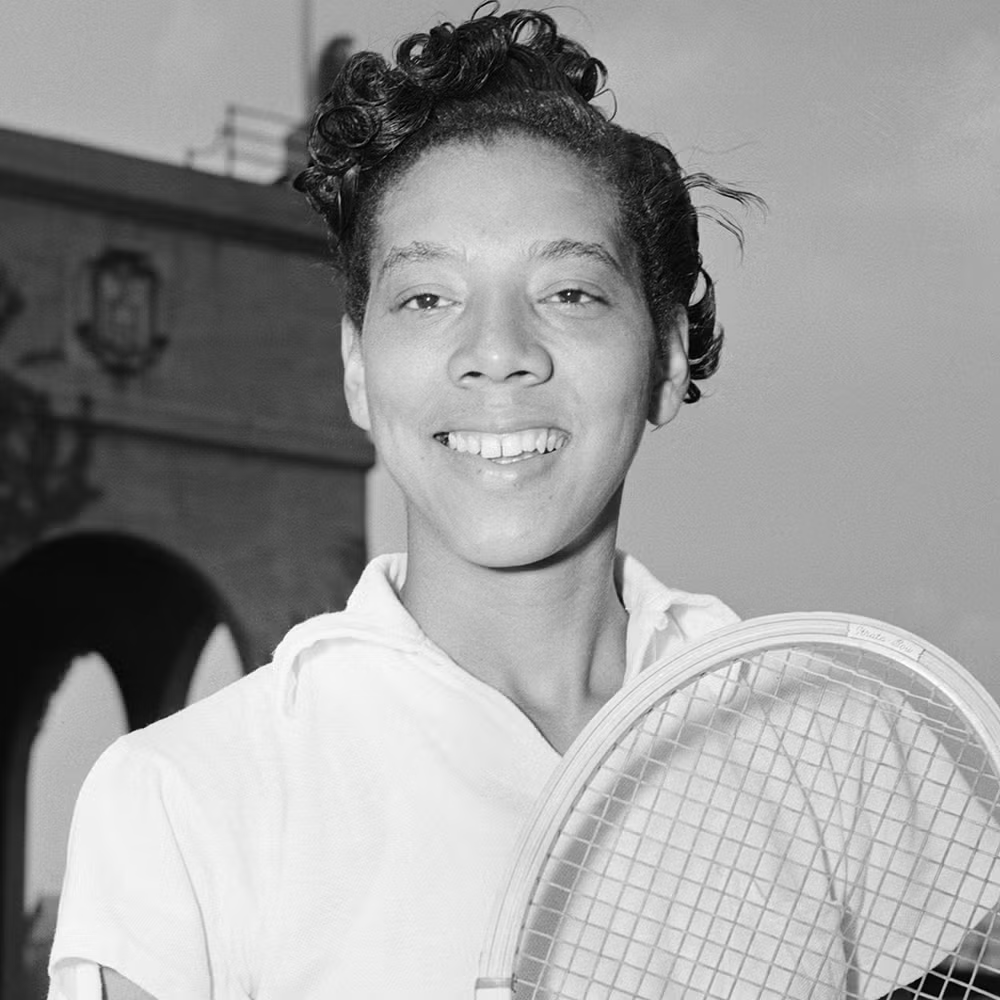
Table of Contents
Who Was Althea Gibson?
Althea Gibson was a pioneering African American tennis player who broke racial barriers and became one of the sport’s most celebrated champions. Developing a passion for tennis at an early age, Gibson faced significant obstacles due to the racial segregation of the sport during the 1940s and 1950s, when many major tournaments were closed to African Americans. Despite these challenges, she persevered, honing her skills and ultimately becoming the first African American to compete at Wimbledon in 1951. Her breakthrough moment came in 1957 when she won both the women’s singles and doubles titles at Wimbledon, followed by her victory at the U.S. Open in 1958.
Early Life and Career
Althea Neale Gibson was born on August 25, 1927, in Silver, South Carolina. Raised in Harlem, New York, Gibson’s early life was marked by economic hardship, with her family relying on public assistance at times. She struggled academically and was often absent from school, but found solace and joy in sports, particularly paddle tennis. Gibson quickly gained recognition as a local paddle tennis champion, a talent that was eventually noticed by musician Buddy Walker, who encouraged her to try tennis at local courts.
In 1941, Gibson was introduced to the Harlem River Tennis Courts, where she further developed her game. Remarkably, within a year of picking up a tennis racket, she won her first local tournament, organized by the American Tennis Association (ATA), an organization established to support African American tennis players. Her early success was just the beginning, as she claimed two more ATA titles in 1944 and 1945. Gibson’s dominance continued with an impressive ten consecutive championships from 1947 to 1956. During this period, she made history as the first African American tennis player to compete at both the U.S. National Championships in 1950 and Wimbledon in 1951, solidifying her place in the sport’s history.
Making History
Gibson’s success at the ATA tournaments set the stage for her to attend Florida A&M University on a sports scholarship. Graduating in 1953, she faced significant financial struggles during her time at the school. At one point, she even contemplated leaving tennis behind to join the U.S. Army. Much of her frustration stemmed from the fact that the tennis world remained largely inaccessible to her. The sport, dominated and managed by white players and officials, was racially segregated, reflecting the broader societal divisions of the time.
The turning point came in 1950, when Alice Marble, a former World No. 1 tennis player, published an article in American Lawn Tennis magazine criticizing the sport for excluding a player of Gibson’s caliber from the world’s top tournaments. Marble’s impassioned piece garnered attention, and by 1952, Gibson—one year after becoming the first Black player to compete at Wimbledon—had broken into the U.S. Top 10. She continued her rise, achieving a career-high ranking of No. 7 in 1953.
In 1955, the United States Lawn Tennis Association began sponsoring Gibson, sending her on a State Department-sponsored international tour, during which she competed in countries such as India, Pakistan, and Burma. Standing at 5 feet 11 inches and possessing exceptional athleticism and power, Gibson was poised for even greater accomplishments.
Her breakthrough came in 1956 when she won the French Open. She followed that with titles at Wimbledon and the U.S. Open in both 1957 and 1958. In 1957, she claimed both the women’s singles and doubles titles at Wimbledon, earning a ticker-tape parade in New York City upon her return. In total, Gibson amassed 56 singles and doubles championships before turning professional in 1959.
Despite her pioneering role, Gibson downplayed her impact. “I have never regarded myself as a crusader,” she wrote in her 1958 autobiography I Always Wanted to Be Somebody. “I don’t consciously beat the drums for any cause, not even the Negro in the United States.”
Commercial Success
As a professional, Gibson continued to win, securing the singles title in 1960. More significantly, she began to capitalize on her success financially. She was reportedly paid $100,000 for a series of exhibition matches before Harlem Globetrotter games. For a brief period, she also made history again as the first Black woman to compete in professional golf.
However, her golfing career did not yield the same success as her tennis achievements, and she returned to the tennis circuit. In 1968, with the advent of the Open Era in tennis, Gibson made an attempt to reclaim her former success, but was unable to keep pace with younger players, due to the effects of age and a decline in her physical speed.
Later Years and Death
Following her retirement in 1971, Gibson was inducted into the International Tennis Hall of Fame. She remained active in sports, serving as commissioner of athletics for New Jersey State from 1975 to 1985 and participating in the governor’s council on physical fitness.
Despite her professional accomplishments, Gibson’s later years were marked by hardship. She faced near bankruptcy, with Billie Jean King and other figures from the tennis world stepping in to offer financial assistance. Her health also deteriorated, and she suffered a stroke, followed by severe heart problems. On September 28, 2003, Gibson passed away from respiratory failure in East Orange, New Jersey.
